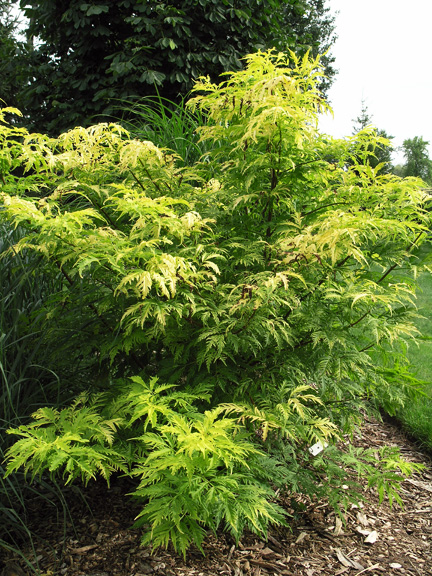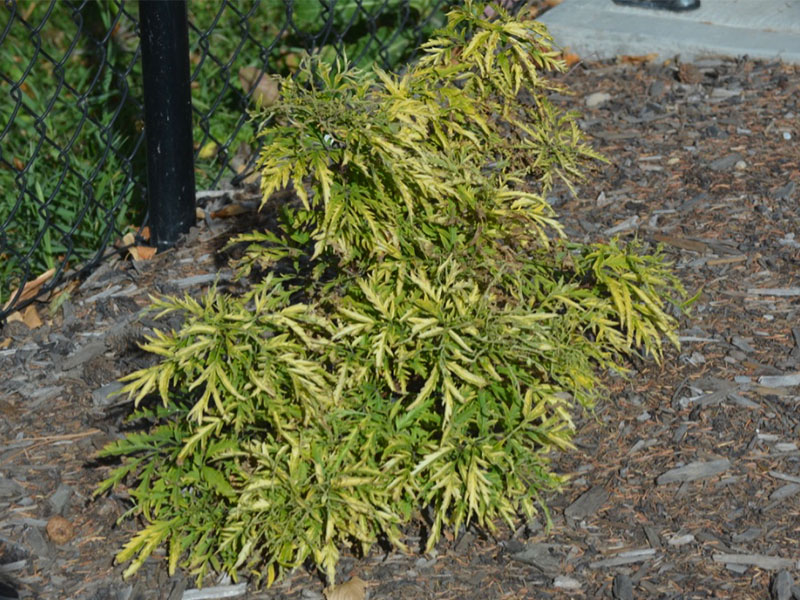
Woody > Sambucus > Sambucus racemosa > Sambucus racemosa
Sambucus racemosa
Red Elderberry, European Red Alder, Red Berried Elder
Origin: Europe, west Asia and North America.
Mike's
Opinion


"
A medium to large shrub with clusters of nice yellow-white spring flowers followed by bright red berry-like summer fruit. Grows in most conditions, but prefers moist soils. A good shrub for naturalized areas to provide food and shelter to native birds. The leaves give off an unpleasant smell that can repel annoying insects. All parts of the plant are toxic, and stems used as pea shooters have resulted in poisonings.
Michael Pascoe, NDP., ODH., CLT., MSc. (Plant Conservation)
"
| Family |
| Adoxaceae (Caprifoliaceae) |
| Genus |
| Sambucus |
| Species |
| racemosa |
| Category |
| Woody |
| Type |
| Shrub (deciduous) |
| Pronunciation |
| USDA Hardiness Zone |
| 4-9 |
| Canadian Hardiness Zone |
| 5-10 |
| RHS Hardiness Zone |
| H7 |
| Temperature (°C) |
| -34 - (-7) |
| Temperature (°F) |
| -30 - (-7) |
| Height |
| 3.5 m - 6 m |
| Spread |
| 3.5 m |
Photographs
Description and Growing Information
Flowering Period
| General Description |
| A medium to large shrub with attractive flowers and fruit. |
| Landscape |
| Naturalized areas, informal hedges, massing. Berries are attractive to birds. Some Cultivars- ‘Pulmosa Aurea’ and ‘Tenuifolia’ are grown for their appealing foliage. |
| Cultivation |
| Grows in most conditions, but can look untidy in winter. An accent to a naturalized setting. |
| Shape |
| Erect, much branching shrub, clump forming. |
| Growth |
| Medium |
| ID Characteristic |
| Numerous branches, easily broken with yellow-white flowers in pyramidal clusters followed by red berries. Leaves are pinnately compound, leaflets often uneven at base. Crushed leaves have unpleasant smell. |
| Pests |
| Elder borer: Wing covers orange at base and iridescent steel blue at tips. Long jointed antennae look like horns. Bores into stems. Also potential for powdery mildew, canker and leaf spot. |
| Habitat |
| Open woods, sub-alpine meadows, clay to sandy upland sites, wet organic sites. |
| Bark/Stem Description |
| Newer branches yellowish-brown and smooth, maturing to greyish-brown, thick and warty. |
| Flower/Leaf Bud Description |
| Spring buds in opposite arrangement. |
| Leaf Description |
| Pinnately compound with 5-7 leaflets, ovate, pointed at tip, often uneven at base. 5-13 cm long, 2.5-5 cm wide. Upper surface green and smooth, underside pale and hairy. Margins sharply toothed. Petioles 2.5-5 cm long. Crushed leaves give off an unpleasant odour. |
| Flower Description |
| Yellow-white, 3-6 mm wide with 5 petals. Numerous in elongated pyramidal panicles 5-13 cm long. April- June depending on zone. |
| Fruit Description |
| Red and berry-like, 4-6 mm long. Smooth, 3 seeded. Grow in upright clusters. Contain a purgative alkaloid, Sambucine. Berries must be seeded and cooked to be edible, otherwise toxic to humans. Enjoyed by birds. |
| Colour Description |
| Green leaves. Yellow-white flowers in spring, Red fruit in Summer. Golden foliage in autumn. |
| Texture Description |
| Brittle stems, warty when mature. |
| Propagation |
| Softwood cuttings in summer or hardwood cuttings in autumn that are planted in a sheltered border until spring then moved to a permanent location. |
References
Some nurseries and garden centres but straight species generally a native woodland plant.

